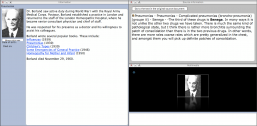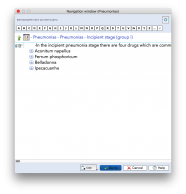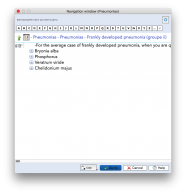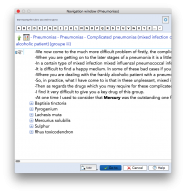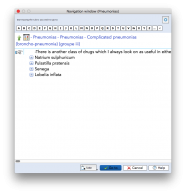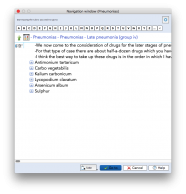RadarOpus Homeopathic Software has a powerful search engine to help you research clinical cases and pathologies. Learn from the Master Homeopaths of the previous centuries!
In this short tutorial, you will learn:
- How to search for Clinical Cases and Pathologies
- How to utilise the Therapeutics books in RadarOpus
- How to learn from the Masters when treating pathological cases
- More about how Borland treated Pneumonias of different stages
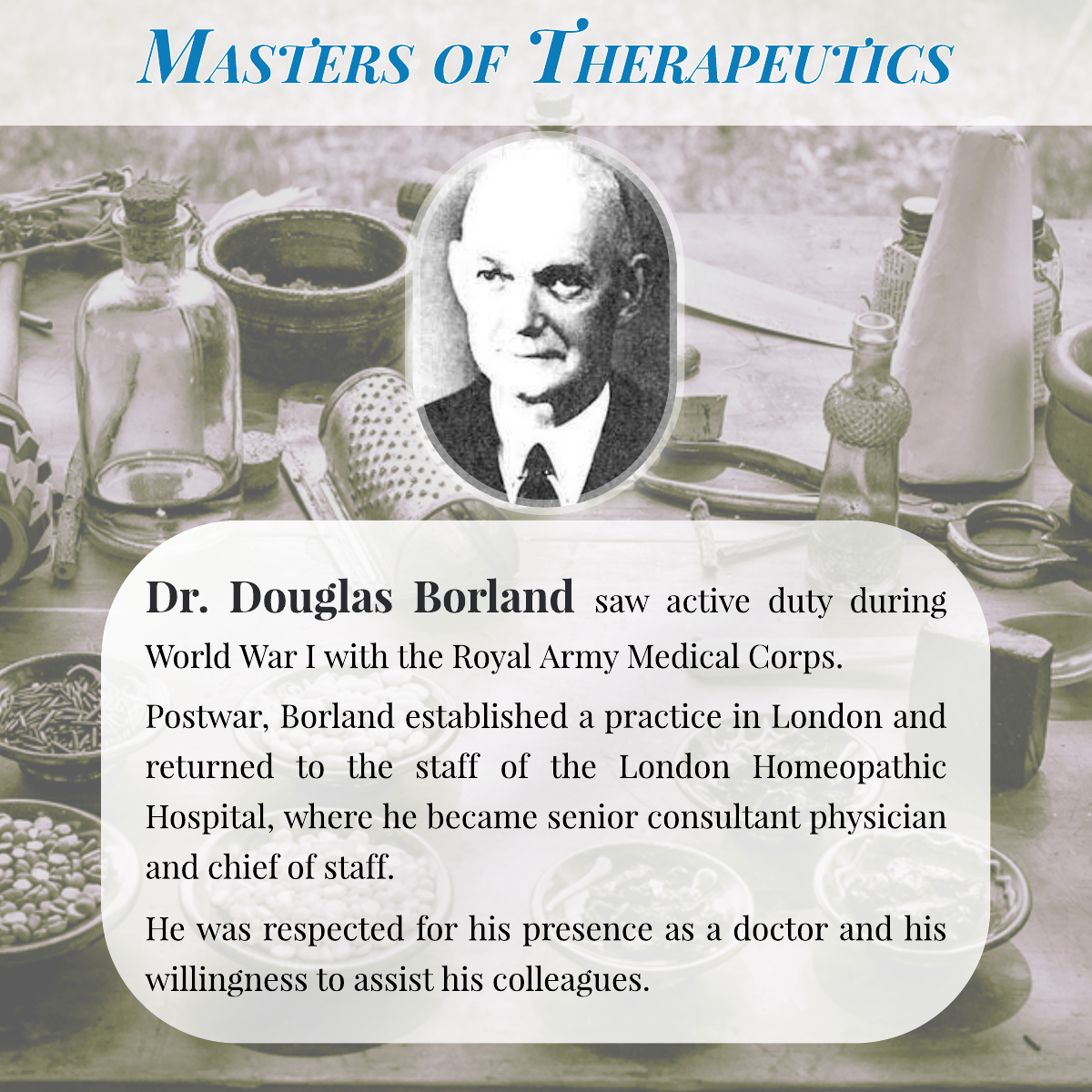
Douglas Borland
MD
(1885-1960)

Douglas Borland M.D. was a leading British homeopath in the early 1900s. In 1908, he studied with Kent in Chicago, and was known to be one of those from England who brought Kentian homeopathy back to his motherland.
He wrote a number of monographs, including the following which are all available in RadarOpus Homeopathic Software:
- Children's Types
- Digestive Drugs
- Homeopathy in Practice
- Homeopathy for Mother and Infant
- Pneumonias
- Some Emergencies of General Practice
- The Treatment of Certain Heart Conditions by Homeopathy
Click on the gallery images below to see the chapter layout of Borland's Pneumonias in RadarOpus - the remedies are listed as belonging to 4 different groups/stages pertaining to the severity of the condition and how it manifests in symptomatology.
Extract from Borland's Pneumonias in RadarOpus
Before discussing the question of prescribing for acute pneumonias I would like to make certain that you all understand the rudiments of what one is attempting to do when tackling cases from the homoeopathic point of view. The point is this. In homoeopathic prescribing your endeavour is to find a drug which will cover not only the actual pathological picture but also the reaction of the individual patient to that disease. Suppose you consider an acute illness, you want a drug which will cover the symptoms that are produced by the infective organism, that is to say, the ordinary symptoms on which you found your diagnosis. The patient is infected, say, with pneumococcus, and has the symptoms of pneumonia, so you want a drug which will cover the pneumonic symptom complex. Well, so far there is no difference from what is done in ordinary medicine.
But, in addition to that, in homoeopathic prescribing you endeavour to find out in what way any one patient A infected with a pneumonococcus will react differently from a patient B infected with the same strain of pneumococcus. Your first endeavour is to find the group of drugs which produces the symptom complex of a pneumococcal infection; your second is to choose from that group the individual drug which covers not only the pneumococcal symptoms but also the manner in which the patient A reacts to his pneumococcal infection. The drug which covers the combined picture is the one you want for patient A, but it would not be successful for patient B who is reacting differently to the same infection. So your whole endeavour is to establish the differences between one patient with a pneumococcal infection and another. First of all you find the common ground, on which you make your diagnosis; then you look for the contrasting points in your different cases in order to make your individual prescription.
The whole of your success in homoeopahtic prescribing depends on your power of recognizing which symptoms are common to every case of infection by a specific organism and which are dependent on the individual reaction of the patient who is infected. It is your ability to recognize differences in identical diseases which determines your success, and that is why the experienced clinican is a far more successful homoeopathic prescriber than the inexperienced; he knows what a pneumonia should do, how it should behave, what are its constant symptoms, and he comes to a case and says, "Hello, this man is a little different". It is on that difference that he founds his prescription, and it is because he recognizes that difference that he is successful. So do not imagine that the practice of Homoeopathy is going to make your clinical medicine of less use to you; on the contrary, it is going to take advantage of every atom of knowledge and experience that you have, and the greater your clinical experience the more successful you are going to be. We are always hearing that we homoeopaths are symptom hunters, that we prescribe on symptoms alone. We do nothing of the kind. The only successful homoeopathic prescribers I have known have been most observant clinicans. Instead of tending to neglect one's clincal work one pays more and more attention to it and it steadily improves, and it is on that that successful homoeopathic prescribing depends.
From what I have said, you will see the significance of the statement that you must cover the totality of your symptoms, in other words, the symptoms of the disease and all the other symptoms as well. In practice you select the drugs which you know have an affinity to the symptoms of the disease you are treating possibly a dozen or so drugs and you can then neglect these diagnostic symptoms, as you know these drugs all have them, and concentrate on finding symptoms which from a diagnostic point of view are not normally considered at all.
In RadarOpus Software, you can use the Advanced Search tool to search for clinical cases and pathologies
The screenshot below gives a paractical example of how you can use the vast Homeopathic library in RadarOpus to locate case reports and Therapeutics with pinpoint accuracy, ease and speed. Simply type F5 or click "Search" from the top menu bar, then select "Advanced Search". Start typing a pathology in the Right hand text field - a pick list will appear showing everything in the library which has been tagged with the same terminology.
- Watch this video for a guided tutorial!

One can see from the Table of contents (TOC) on the left hand side, that Borland's work on Pneumonias is rich in information.
From there, you can click on "Borland" in the TOC to see all the search results. You can even add all the remedies quickly to a custom rubric by typing ctrl-enter (PC), or cmd-enter (Mac).
- Watch this video to find out more about creating custom rubrics
Here, you can see all the remedies in Borland's Pneumonias reference:

You can also open the Reference book itself to read the Therapeutic indications of the listed remedies.
For example, there is a useful chapter on a lesser known remedy - Senega polygala


You can also broaden your research of Senega by performing a second search for the remedy in all repertories. To see the clinically confirmed symptoms of the remedy, open a Simple Search window (type F4 or click the main Search icon). R-click on the remedy name. You will see this window:

You can deselect Degrees 1 and 2 to see only the more confirmed symptoms of Senega.
Then you can perform the search and look in the various repertories in your RadarOpus library. For example, check out Pulford's Repertory of Penumonia for highly specific results:


